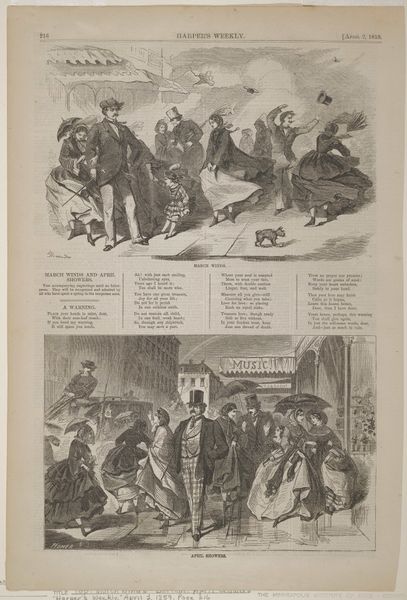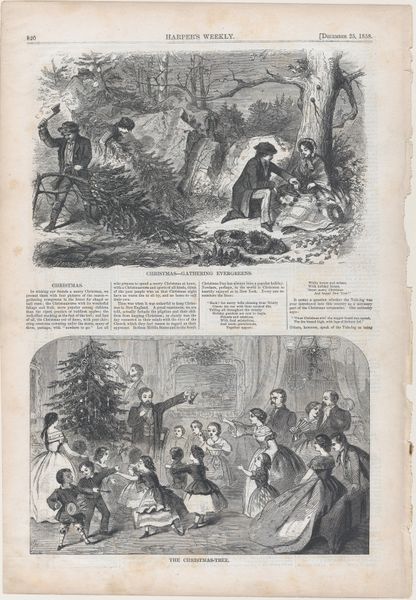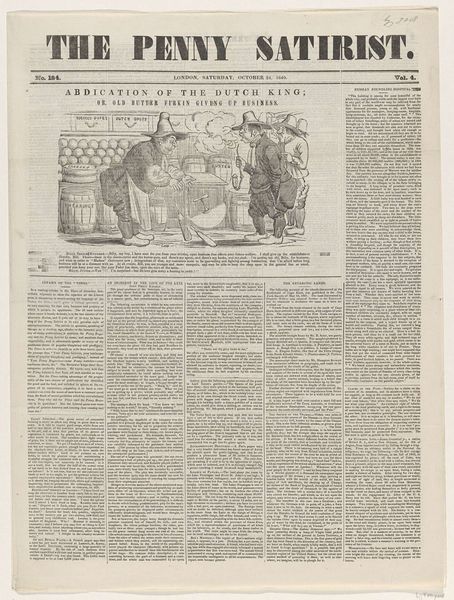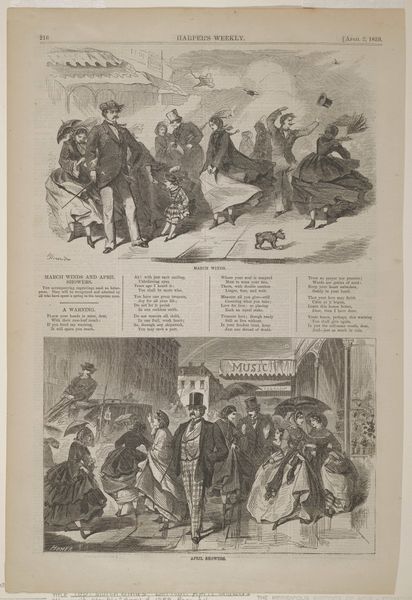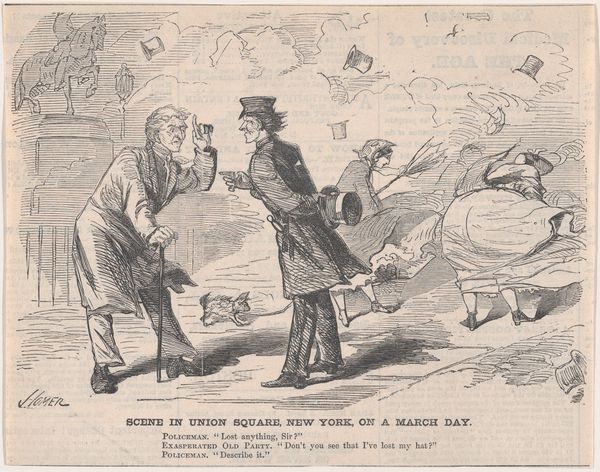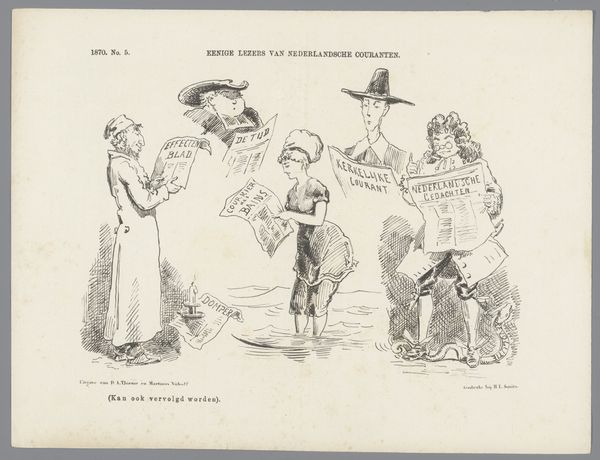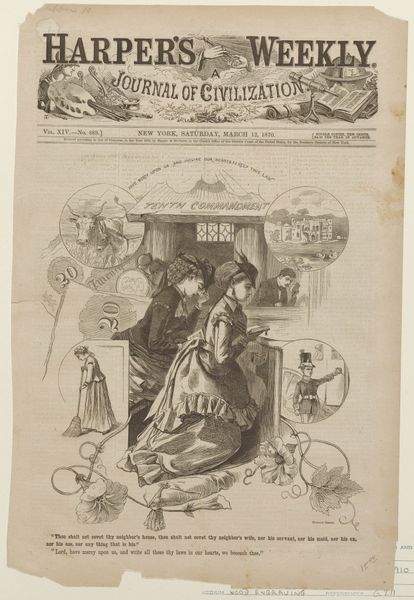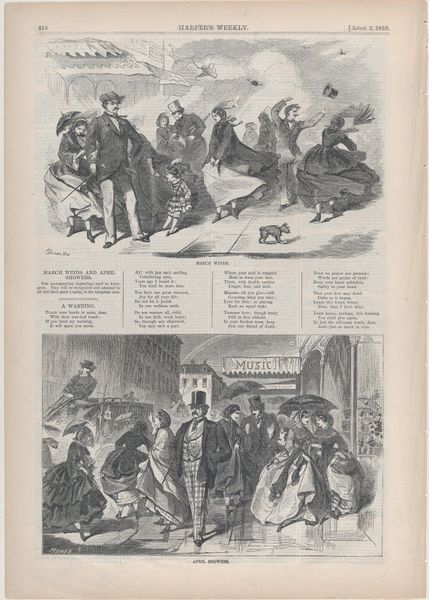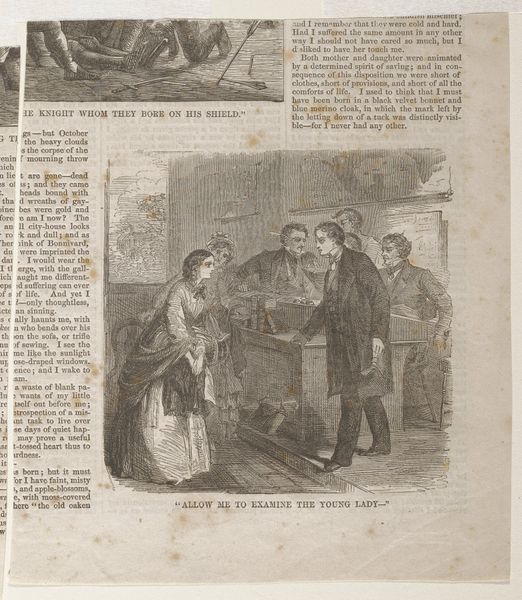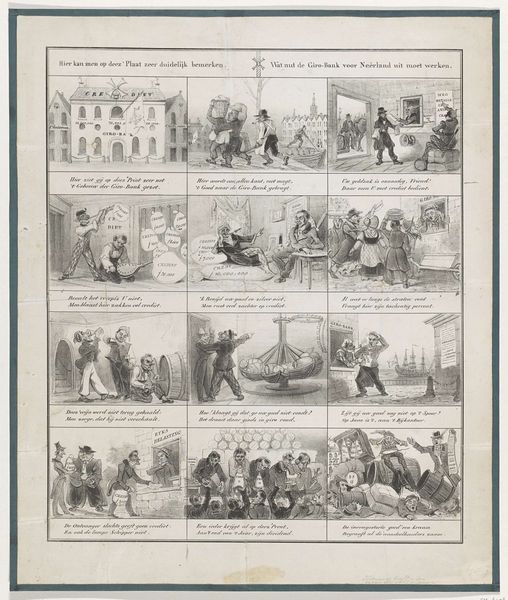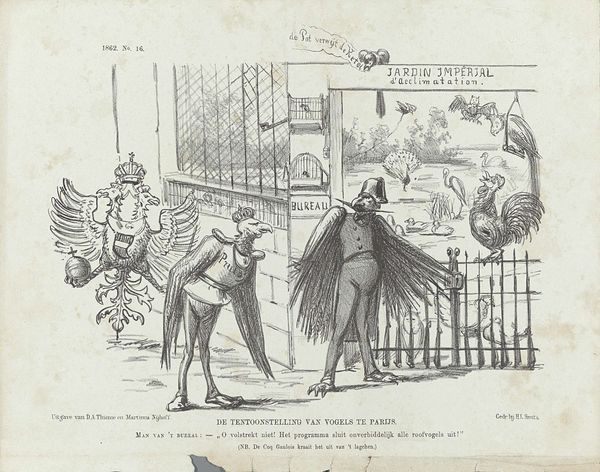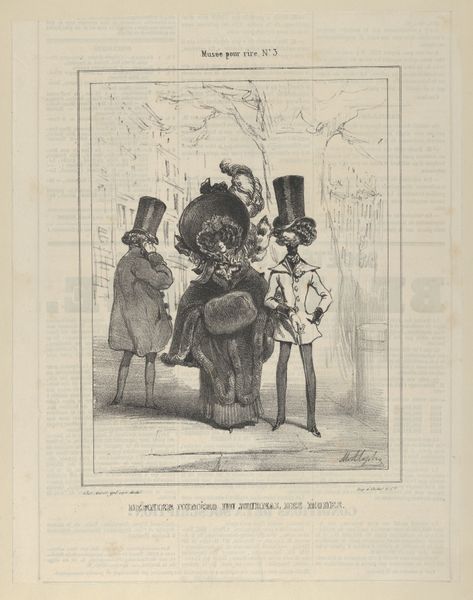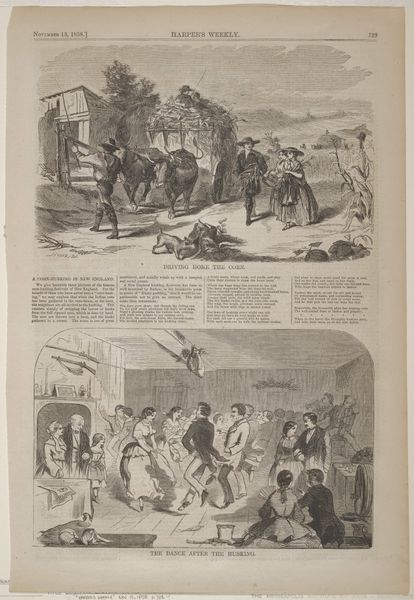
graphic-art, print, woodcut, wood-engraving
#
graphic-art
# print
#
woodcut
#
united-states
#
cityscape
#
genre-painting
#
wood-engraving
#
realism
Dimensions: 4 3/4 x 6 3/4 in. (12.1 x 17.1 cm)
Copyright: Public Domain
Curator: Winslow Homer's "Scene in Union Square," created around 1860, captures a blustery day. This image comes to us through the graphic arts, specifically as a woodcut. What are your initial thoughts? Editor: It feels frenetic. Look at all those hats flying about, caught in the wind! It looks like chaos in the square but carefully constructed. And it’s printed on newsprint…the immediacy feels incredibly tangible. Curator: Exactly! Realism in art coincided with vast changes in print culture. This would have appeared in *Harper's Weekly*. Consider its original audience and the role illustrations played in shaping public perception during the Civil War era. Editor: The process becomes incredibly important. Think about the labor involved in creating this wood engraving—the time, the skill needed to translate this scene onto a block. Plus, this print medium is made for dissemination to the masses and widespread consumption. Curator: Precisely! We’re not looking at a singular masterpiece, but a mass-produced image intended for broad consumption. The scene itself becomes a microcosm of social dynamics, doesn't it? Observe how Homer renders different social classes within the bustling cityscape and note what's included and who is featured. Editor: Absolutely. The material context shapes how we interpret the image. Look at how Homer portrays these figures; we don’t have individual portraits, instead figures caught in a whirlwind and we must see the ways in which production shapes the very narrative being presented. It humanizes these grand historical processes by situating people as active agents withing grand-scale phenomena. Curator: And we’re forced to ask, who is represented and for whom. This adds layers to understanding social visibility at a crucial time in American history. We begin to observe and interpret art not merely as objects of beauty but as artifacts deeply interwoven with power structures. Editor: It’s an intersectional examination that pulls apart assumptions of fine art. By studying the processes of its construction, and how something has arrived from an idea or observation to a tangible product reveals much. It makes for something even greater than aesthetics. Curator: Indeed. This understanding challenges how we perceive art's function in society. It moves it out from solely the individual interpretation, into a shared context. Editor: Precisely. A new depth emerges, connecting artistic creation to society at large and changing how we discuss the artwork's effect as being made to incite discourse and potentially social changes. Curator: By acknowledging its historical context and acknowledging how it came to us it truly brings a print from the past into an immediate and vibrant present. Editor: A vibrant present that still questions the ways art is used and consumed.
Comments
No comments
Be the first to comment and join the conversation on the ultimate creative platform.
